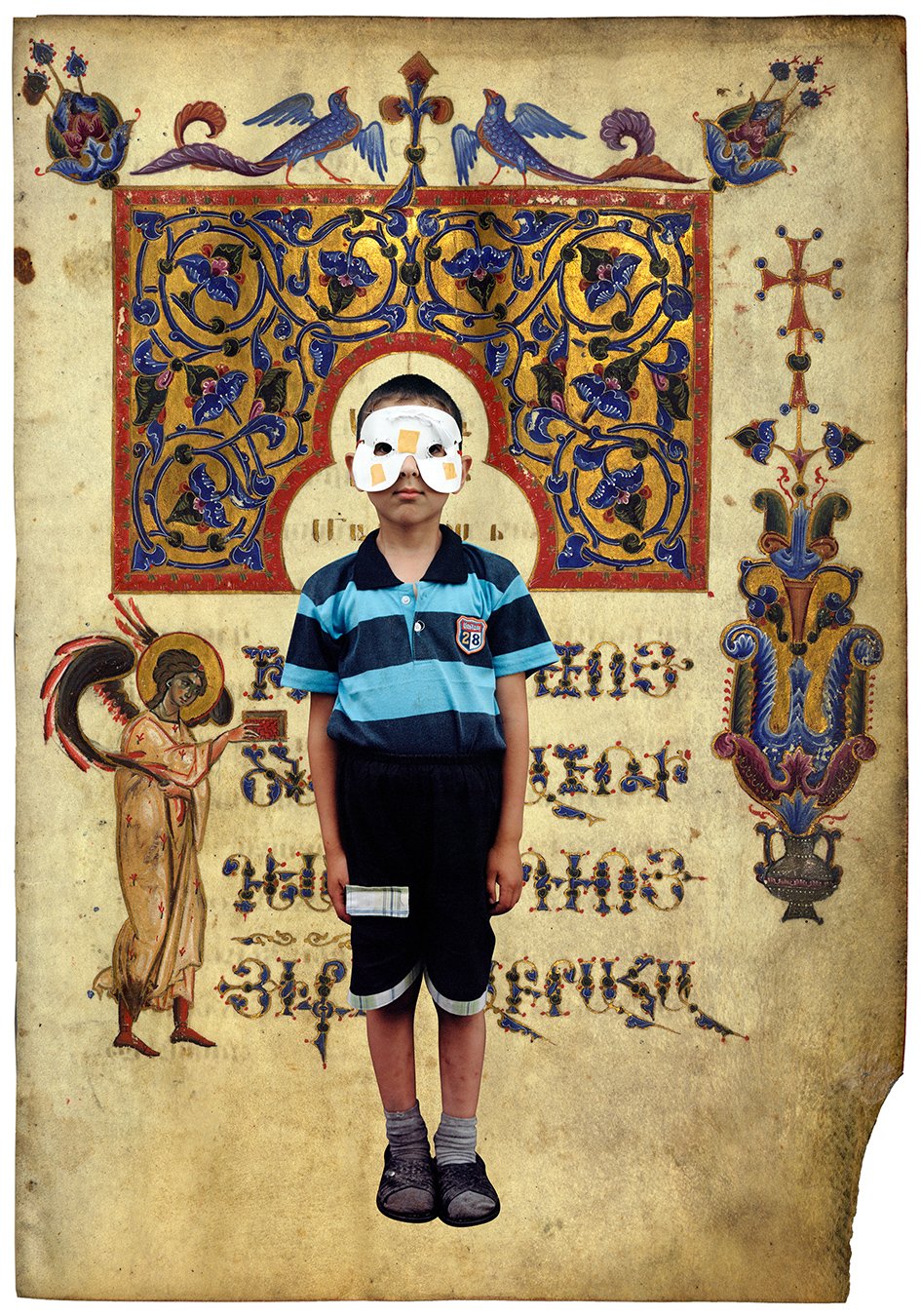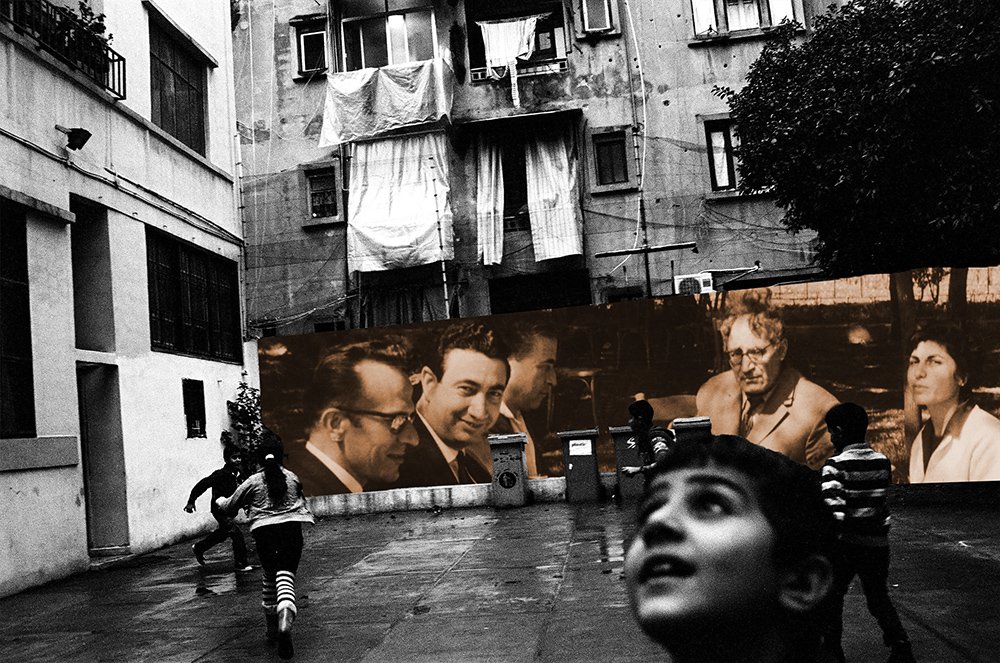Ara Oshagan’s Metaphors of Diasporic Liberation
By Hrag Vartanian
“The nation fills the void left in the uprooting of communities and kin, and turns that loss into the language of metaphor. Metaphor, as the etymology of the word suggests, transfers the meaning of home and belonging, across the ‘middle passage’, or the central European steppes, across those distances, and cultural differences, that span the imagined community of the nation-people.” — Homi K. Bhabha, “DissemiNation: time, narrative, and the margins of the modern nation” in Nation and Narrative (Routledge, 1990)
The burden of national history can be heavy, and it is often carried by those of us from ancient cultures that refuse to rest on the laurels of the past but are eager to recalibrate ourselves and communities for a new era. In this curious, if nebulous space of refuge and reinvention, where many of us find ourselves trying to reconstitute something that may no longer exists, it is often with the help of the camera that we have been able to root our place in the world, framing and reframing ourselves in a way that posits new ideas of home, family, and belonging.
Image making allows us to scrutinize, shatter, and reconstitute the world around us in order to reinvigorate a sense of place and our relationship to it. The most exciting images challenge the imagery that has come before and reconciles them with the anxieties and realities of the present with the dreams of the future — Ara Oshagan’s art functions in this intersection.
Gather #2, 2021, Digital Collage, Archival Pigment Print
During the last decade, he has been using his mastery of image making as a form of world making, forging an archipelago of visual resistance amidst a hurricane of forces that attempt to flatten the complexity of the Armenian community and its spectrum of identities that span the typologies of homeland and diaspora alike. He’s part of a new generation of artists of Armenian descent who parallel the fight for Armenian liberation and sovereignty with the need to create visual languages that celebrate those ambitions without succumbing to nostalgia or traditional ideas around land, kinship, and belonging.
Oshagan often uses collage and stark juxtapositions as a way to demonstrate that rupture between time, space, and continuity. Yet Oshagan’s art thwarts the traditional boundaries of nationalism and he is constantly connecting his images to a history while removing any semblance of present-day alienation by using his own form of cultural care to mend what is broken.
displaced #8, Nor Marash, 2018
Rather than relying solely on the illusionistic depth of the photographic image, he is often lingering on its two-dimensionality, treating images like fabric, layering them to invigorate the patterns, or rupturing them to highlight their artifice. His refusal of spatial depth, or more correctly, when he challenges its logic with unconventional compositions that foreground our relationship to the image, feels consciously playful and unmoored, reflecting the fluidity of diaspora in relation to ideas around belonging and territory. His displaced (2014–18) series is an example of this tendency to unsettle the viewer’s sense of pictorial spaces. Black forms often take up whole parts of his photographs from the Armenian-majority city of Bourj Hammoud in Lebanon, while blurry figures, shadowy shapes, and close ups force us to decipher the worlds in front of us, pushing us to read it as a psychological place, rather than simply a geographic one. The metaphors for diaspora are palpable.
In his Shushi Portraits series, the artist places portraits of contemporary Artsakhtsi atop a well-known masterpiece of Armenian art, Toros Roslin’s 13th-century Zeytun Gospels. The figures pose for the artist in sandals, wearing t-shirts, shorts, and the other accessories of daily life without the formal primping and posing that has historically been part of portrait photography. Removing a traditional sense of background, or landscape, the manuscript pages become a context, suggesting another type of place for the figures who confront the viewer directly with their gaze. As Homi Bhabha has written about in relation to the use of landscape in national narratives, the “metaphor of landscape is often an inscape of national identity” that “emphasizes the quality of light, the question of social visibility, the power of the eye to naturalize the rhetoric of national affiliation and its forms of collective expression.” That construction of the image here replaces a traditional landscape with a page. It reminds me of a famous Arshile Gorky quote, “I don't paint nature, I am nature.” The line overturns the traditional concept of Western visuality by seeing little separation between the world and the individual, the subject and the art, the artists and their muse. Those rendered by Oshagan in this series are people who have not yet left the fabled garden of paradise.
In “Shushi Portraits #5” (2021), the artist places a contemporary resident of Shushi, which is currently occupied by Azerbaijani forces, atop the historical “Ancestors of Christ,” a Biblical lineage that is often reproduced to provide evidence that the birth of Jesus was the fulfillment of Biblical prophecy. Here a middle-aged man looks at us almost defiantly, while the contrast of his informal clothes and the Royal manuscript heighten the dissonance we’re experiencing. What is his lineage to this place? Is he fulfilling a prophecy of his own?
Shushi Portrait #5, 2021, Digital Collage, Archival Pigment Print
Shushi Portrait #6, 2021, Digital Collage, Archival Pigment Print
In “Shushi Portraits #6” (2021), a little boy dons a mask as he’s framed by the decorative beauty of the opening page of the gospel of Matthew in the same manuscript. His playfulness animates the background in an unexpected way, highlighting the curlicue shapes around him. There is no veneration or preciousness, and the boy appears to be at one with the page.
Ara Oshagan’s interest in the material culture of Armenians and how it adapts to time and place is most apparent in his recent That You May Return series (2022), which is based on hmayils (scroll-shaped amulets with protective magical powers). Historically these scrolls were endowed with fantastical ability and were placed close to the sick because of their reputed powers to heal. They represent a wish that can be conjured up through the power of the word and art, making them akin to what many artists try to do with their own work.
In “but for the happenstance of history II” (2020), Oshagan returns to Bourj Hammoud and makes “a speculative attempt to de-exile and recover the [Western Armenian] language’s fragments.” Image is language, image becomes a form of dialect, and together they are used to kintsugi a place that has been broken and shattered so many times that the idea of wholeness is almost alien.
Beirut Memory Project, #22, 2018- 2021, Digital collage, Archival Pigment Print
Which brings up many questions. What if we were never whole? What if the journey is also the homeland? What if our liberation comes from our refusal to stop? What if when someone asked you where you’re from you always answered, “Here”? What if a homeland was as reliant on an understanding of diaspora as much as the other way around?
Liberation, like decolonization, is not only a metaphor.
This essay is reposted with permission from the catalogue for “Ara Oshagan” Disrupted, Borders,” which was on exhibition at Stockton University Art Gallery from January 18 to April 6, 2023. Hrag Vartanian is an art critic, curator, artist, and lecturer on contemporary art and he is editor-in-chief and co-founder of Hyperallergic.





